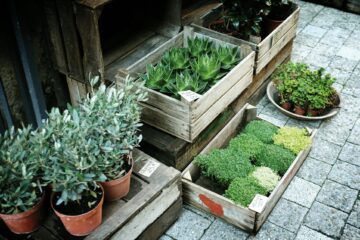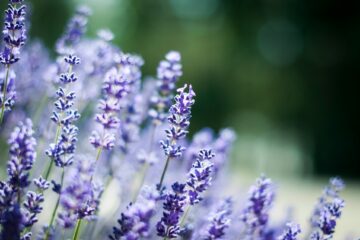Keeping a gardening journal is a valuable practice for several reasons, whether you’re a seasoned gardener or just starting out. Here’s what you can start recording in your gardening journal:
1. Planting Log
- Details: Record the date, type of plant, seed or seedling, and location in your garden. Include notes on soil preparation, planting depth, and spacing.
- Purpose: Track planting times and methods to optimize future plantings.
2. Growth and Development Notes
- Details: Document the growth stages of your plants, noting when they sprout, bloom, and bear fruit. Include observations on leaf color, plant height, and overall health.
- Purpose: Monitor plant development and identify patterns or issues early.
3. Weather Observations
- Details: Record daily or weekly weather conditions, including temperature, rainfall, frost, and wind. Note any extreme weather events.
- Purpose: Understand how weather impacts your garden and adjust care accordingly.
4. Pest and Disease Tracking
- Details: Note any signs of pests or diseases, including affected plants, symptoms, and any treatments used. Document the effectiveness of each treatment.
- Purpose: Identify recurring issues and effective management strategies.
5. Watering Schedule
- Details: Track your watering routine, including dates, amounts, and any observations on soil moisture or plant response.
- Purpose: Optimize watering practices and ensure plants are getting the right amount of water.
6. Fertiliser and Soil Amendments
- Details: Record when and what type of fertilizers or soil amendments you apply, along with the quantities and application methods.
- Purpose: Evaluate the impact of different fertilizers on plant health and growth.
7. Harvest Records
- Details: Log the dates, quantities, and quality of your harvests. Include notes on flavor, size, and storage methods.
- Purpose: Track productivity and identify your best-performing crops.
8. Garden Design and Layout
- Details: Sketch or describe your garden layout, noting where each plant is located. Include ideas for future design changes.
- Purpose: Plan for efficient use of space and rotate crops to maintain soil health.
9. Seed Saving Notes
- Details: Document the process of saving seeds, including the plants chosen, how seeds were collected and stored, and germination results.
- Purpose: Build a personal seed library and improve seed-saving techniques.
10. Pruning and Maintenance
- Details: Keep track of when and how you prune, deadhead, or otherwise maintain your plants. Include notes on plant response.
- Purpose: Learn the best times and methods for pruning different plants.
11. Seasonal Reflections
- Details: At the end of each season, reflect on what went well, what challenges you faced, and what you learned. Include ideas for the next season.
- Purpose: Review your gardening year to plan improvements and celebrate successes.
12. New Plant Trials
- Details: Record your experiences with new plant varieties, including why you chose them, how they performed, and whether you’d grow them again.
- Purpose: Experiment with new plants and keep a record of successes and failures.
13. Composting Journal
- Details: Track your composting efforts, noting what materials you add, how often you turn the pile, and the quality of the finished compost.
- Purpose: Optimise your composting process and create richer compost.
14. Tool and Equipment Maintenance
- Details: Document the maintenance of your gardening tools, including sharpening, cleaning, and repairs. Note any purchases of new tools or equipment.
- Purpose: Keep your tools in top condition and manage your gardening budget.
15. Garden Inspiration
- Details: Collect ideas, photos, and inspiration from other gardens, books, or online sources. Include plans to incorporate these ideas into your garden.
- Purpose: Stay inspired and continually improve your garden’s design and functionality.
16. Budget and Expenses
- Details: Record your gardening expenses, including seeds, tools, fertilizers, and plants. Compare costs with your harvest value.
- Purpose: Manage your gardening budget and evaluate the cost-effectiveness of your garden.
17. Wildlife Observations
- Details: Note the wildlife that visits your garden, including birds, insects, and small mammals. Record how they interact with your plants.
- Purpose: Understand the role of wildlife in your garden’s ecosystem.
18. Soil Testing Results
- Details: Document the results of any soil tests, including pH, nutrient levels, and recommended amendments.
- Purpose: Tailor your soil management practices to the specific needs of your garden.
19. Garden Photography
- Details: Include photos of your garden throughout the year, capturing changes, blooms, and growth stages.
- Purpose: Visually track progress and create a visual record of your gardening journey.
20. Personal Reflections
- Details: Reflect on how gardening makes you feel, what it teaches you, and any personal goals you have for your gardening practice.
- Purpose: Deepen your connection to gardening as a mindful and fulfilling activity.
These journal entry ideas will help you create a detailed, personal record of your gardening experiences, leading to continuous learning and improvement in your gardening practice.
Keep on top of your gardening with our free online journal
Our free online tool allows you to organise your ideas and garden plans and help you be as efficient as possible in the garden.
Sign up now

